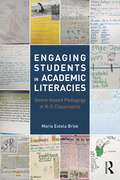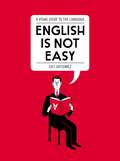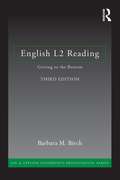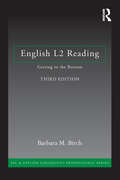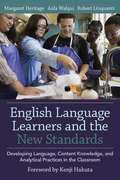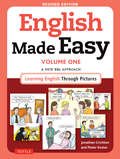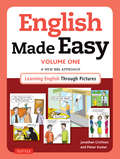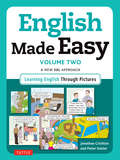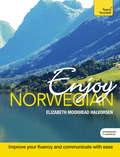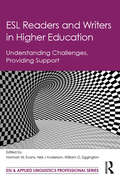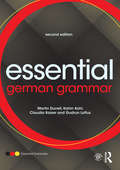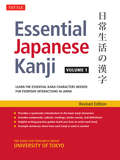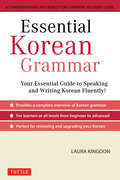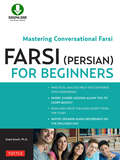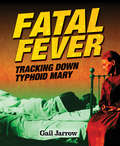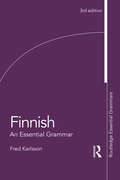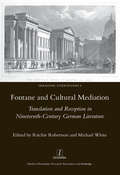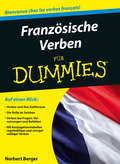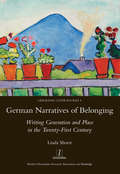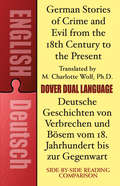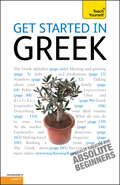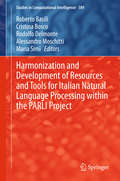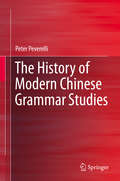- Table View
- List View
Engaging Students in Academic Literacies: Genre-Based Pedagogy for K-5 Classrooms
by María Estela BriskThe Common Core State Standards require schools to include writing in a variety of genres across the disciplines. Engaging Students in Academic Literacies provides specific information to plan and carry out genre-based writing instruction in English for K-5 students within various content areas. Informed by systemic functional linguistics—a theory of language IN USE in particular ways for particular audiences and social purposes—it guides teachers in developing students’ ability to construct texts using structural and linguistic features of the written language. This approach to teaching writing and academic language is effective in addressing the persistent achievement gap between ELLs and "mainstream" students, especially in the context of current reforms in the U.S. Transforming systemic functional linguistics and genre theory into concrete classroom tools for designing, implementing, and reflecting on instruction and providing essential scaffolding for teachers to build their own knowledge of its essential elements applied to teaching, the text includes strategies for apprenticing students to writing in all genres, features of elementary students’ writing, and examples of practice.
English Is Not Easy: A Visual Guide to the Language
by Luci GutiérrezA cheeky, sophisticated, and strikingly illustrated guide that leaves generic English reference books in the dust When prominent Barcelona-based illustrator Luci Gutiérrez found herself tuning out in English class, she used her love of drawing to help retain what she’d learned. Ditching the kind of bland and useless phrases that fill most English textbooks, Gutiérrez uses whimsical characters, cheeky dialogue, and even insults to bring vocabulary, grammar, and usage topics to life. Nearly forty-seven million people in the United States speak a language other than English at home, and even most native speakers struggle with subtle distinctions, such as when to use “whether” as opposed to “if.” (For example: I wonder whether I should have added a little more poison to his tea.) Already published to wide acclaim abroad, English Is Not Easy is sure to delight grammar mavens and students of English in America.
English L2 Reading: Getting To The Bottom
by Barbara M. BirchEnglish L2 Reading, Third Edition offers teachers research-based insights into bottom-up skills in reading English as a second language and a solid foundation on which to build reading instruction. Core linguistic and psycholinguistic concepts are presented within the context of their application to teaching. The goal is to balance or supplement (not replace) top-down approaches and methodologies with effective low-level options for teaching English reading. The text's pedagogical features-- Questions, Study Guide Questions. Discussion Questions, Spotlight on Teaching sections-- engage readers of the text in moving easily from linguistic details and psycholinguistic data and theory to practical explanations and suggestions for teaching. Two Appendices provide tables that list the graphemes or the phonemes of English.
English L2 Reading: Getting to the Bottom
by Barbara M. BirchEnglish L2 Reading, Third Edition offers teachers research-based insights into bottom-up skills in reading English as a second language and a solid foundation on which to build reading instruction. Core linguistic and psycholinguistic concepts are presented within the context of their application to teaching. The goal is to balance or supplement (not replace) top-down approaches and methodologies with effective low-level options for teaching English reading. The text’s pedagogical features— Questions, Study Guide Questions. Discussion Questions, Spotlight on Teaching sections— engage readers of the text in moving easily from linguistic details and psycholinguistic data and theory to practical explanations and suggestions for teaching. Two Appendices provide tables that list the graphemes or the phonemes of English. Changes in the Third Edition Shift in focus from criticism of whole language methodologies to a more neutral stance —times have changed and the study of lower-level reading strategies is now mainstream Greater focus on linguistic form, along with function and meaning Updated information about reading strategies at each level of the reading process More Spotlight on Teaching sections, one for each chapter New chapter on spelling development
English Language Learners and the New Standards: Developing Language, Content Knowledge, and Analytical Practices in the Classroom
by Margaret Heritage Aída Walqui Robert LinquantiIn English Language Learners and the New Standards, three leading scholars present a clear vision and practical suggestions for helping teachers engage ELL students in simultaneously learning subject-area content, analytical practices, and language. This process requires three important shifts in our perspective on language and language learning—from an individual activity to a socially engaged activity; from a linear process aimed at correctness and fluency, to a developmental process, focused on comprehension and communication; and from a separate area of instruction to an approach that embeds language development in subject-area activities. In English Language Learners and the New Standards, the authors:Clarify the skills and knowledge teachers need to integrate content knowledge and language developmentShow how teachers can integrate formative assessment in ongoing teaching and learningDiscuss key leverage points and stress points in using interim and summative assessments with ELLsProvide classroom vignettes illustrating key practicesFinally, the authors explain the theories and research that underlie their vision and examine the role of policy in shaping pedagogy and assessment for ELL students.
English Made Easy Volume One: 1
by Jonathan Crichton Pieter KosterThis is a fun and user-friendly way to learn EnglishEnglish Made Easy is a breakthrough in English language learning-imaginatively exploiting how pictures and text can work together to create understanding and help learners learn more productively. <P><P> It gives beginner English learners easy access to the vocabulary, grammar and functions of English as it is actually used in a comprehensive range of social situations. Self-guided students and classroom learners alike will be delighted by the way they are helped to progress easily from one unit to the next, using a combination of pictures and text to discover for themselves how English works. The pictorial method used in this book is based on a thorough understanding of language structure and how language is successfully learned. The authors are experienced English language teachers with strong backgrounds in language analysis and language learning.English Made Easy, Volume 1 consists of a total of 20 units arranged in groups of five. The first four units presents language and provide learners the opportunities to practice as they learn. The first page of each unit has a list of all the words and phrases to be learned in that unit, together with pronunciation guide. At the end of each unit, an interesting story which uses the language that has just been learned is presented. The fifth unit in each group contains exercises designed to reinforce the language learned in the first four units.
English Made Easy Volume One: Learning English Through Pictures
by Jonathan Crichton Pieter KosterEnglish Made Easy is a breakthrough in English language learning--imaginatively exploiting how pictures and text can work together to create understanding and help learners learn more productively.<P><P> It gives beginner English learners easy access to the vocabulary, grammar and functions of English as it is actually used in a comprehensive range of social situations. Self-guided students and classroom learners alike will be delighted by the way they are helped to progress easily from one unit to the next, using a combination of pictures and text to discover for themselves how English works. The pictorial method used in this book is based on a thorough understanding of language structure and how language is successfully learned. The authors are experienced English language teachers with strong backgrounds in language analysis and language learning.
English Made Easy Volume Two: 2
by Jonathan Crichton Pieter KosterThis is a fun and user-friendly way to learn EnglishEnglish Made Easy is a breakthrough in English language learning-imaginatively exploiting how pictures and text can work together to create understanding and help learners learn more productively.<P><P> It gives beginner English learners easy access to the vocabulary, grammar and functions of English as it is actually used in a comprehensive range of social situations. Self-guided students and classroom learners alike will be delighted by the way they are helped to progress easily from one unit to the next, using a combination of pictures and text to discover for themselves how English works. The pictorial method used in this book is based on a thorough understanding of language structure and how language is successfully learned. The authors are experienced English language teachers with strong backgrounds in language analysis and language learning.English Made Easy, Volume 2 consists of a total of 20 units arranged in groups of five. The first four units presents language and provide learners the opportunities to practice as they learn. The first page of each unit has a list of all the words and phrases to be learned in that unit, together with pronunciation guide.
Enjoy Norwegian Intermediate to Upper Intermediate Course: Enhanced Edition
by Elizabeth Moorhead Curtiss nee HalvorsenDo you want to have more meaningful conversations in Norwegian? Do you want to feel comfortable in a variety of situations?Based on authentic texts, such as songs, poems, and conversations between native speakers, this course will help you improve and build upon the language you already have so that you develop your skills to a level where you can enjoy communicating in Norwegian. You will be introduced to the more advanced points of Norwegian grammar, as well as more colloquial language, and develop your vocabulary so you can express your opinion on a number of topics, as well as react to other people's opinions.You will enjoy learning about the culture, history and geography of Norway and its influence on the language. What will I achieve by the end of the course?By the end of Enjoy Norwegian you will have increased your capacity to understand the spoken and written language, and furthered your ability to communicate with Norwegian speakers, orally and in writing.Is this course for me?If you already know some Norwegian and want to take it further, this is the course for you. It's perfect for the self-study learner, with a one-to-one tutor, or for the post-beginner classroom.What do I get?A coursebook with over two hours of audio on CD that features:- Ten units that cover more complex situations than your basic tourist scenarios- Carefully levelled and sequenced material - a solid path to build up your knowledge- Authentic texts, such as poems, songs, excerpts and conversations to present the language- Learn through the Discovery Method which helps you notice and retain the language you learn- Learn to learn - tips and advice on becoming a better language learner - Easy to use workbook format This course will take you from a good intermediate level (Level B2 of the Common European Framework / Advanced Low of the ACTFL) and help you progress up to C1 / Advanced High.What else can I use to learn Norwegian?If you require an absolute Beginner course, you can try our Get Started in Norwegian: 9781473612709If you want a comprehensive Beginner to Intermediate course, you should try our Complete Norwegian: 9781444195040Rely on Teach Yourself, trusted by language learners for over 75 years.
ESL Readers and Writers in Higher Education: Understanding Challenges, Providing Support (ESL & Applied Linguistics Professional Series)
by Norman W. Evans Neil J Anderson William G. EggingtonESL Readers and Writers in Higher Education describes the challenges ESL students in U.S. postsecondary institutions face when studying in a second language, and offers suggestions for how teachers, advisors, tutors, and institutions might provide support that meets the reading and writing needs of this very important student population. Because the ESL profession as a whole, including what professionals are doing in the classroom, sits under the umbrella of an institutional response to a language-related challenge, some solutions aimed at helping students achieve optimal proficiency lie outside of the classroom. As such, this book is based on the assertion that language development support is not the sole responsibility of language teachers. Everyone on campuses that hosts ESL students bears some responsibility for these students' language development. Chapters are therefore, intentionally adapted to appeal to a wide variety of readers from classroom teachers, and teachers in training, to admissions officers, academic advisors, and international student advisors.
Espaces: Rendez-vous avec le monde francophone
by James G. Mitchell Cheryl TanoNIMAC-sourced textbook
El español de los Estados Unidos
by Anna María Escobar Kim PotowskiHow long has Spanish been spoken in the US and how many people speak it today? Is Spanish being passed down through generations? What role does Spanish play in US Latino identity? Analysing and synthesising data from a wide variety of sources, Escobar and Potowski explore these questions and more in this up-to-date textbook for students of Spanish language, linguistics, bilingualism, sociolinguistics, culture, and history. • Over 150 exercises help students engage with the linguistic characteristics of Spanish, Spanish-dialect contact, bilingualism, and Spanish communities in the US • Exercises and examples refer students to external, online sources so they can experience Spanish through a range of media • Concepts are clearly defined with detailed examples for readers who may not have a background in linguistics • Misconceptions about Spanish varieties and Latino communities are addressed, ensuring readers will emerge with a clear understanding of how Latino communities vary linguistically and socioculturally. Linguistic concepts are clearly defined, and more complex concepts include detailed examples and exercises. Each chapter contains exercises which help readers to understand and reflect on new material. Chapter exercises direct readers to online resources so they can experience authentic examples.
Essential German Grammar (Essential Language Grammars)
by Martin Durrell Katrin Kohl Gudrun Loftus Claudia KaiserEssential German Grammar is a student-friendly grammar and workbook designed to give learners a firm foundation on which to build a real understanding of both spoken and written German. The reference grammar section offers clear explanations of key grammar points while a separate exercise section gives students the opportunity to test themselves and put into practice what they have learned. This new edition has been revised and updated throughout. Explanations, tables and exercises have been improved and a number of the authentic texts and illustrations have been replaced by new material. Key features of this second edition include: User-friendly layout with updated 2 colour design, engaging illustrations and visually appealing tables throughout to aid the learning process Clear and accessible explanations with memorable examples informed by the latest research on the German language and presented in accordance with current teaching methodology Helpful parallels between English and German provided where relevant End-of-chapter extracts taken from contemporary journalistic or authentic literary sources, illustrating grammar in context, with model translations provided at the back of the book Material to enable better strategic learning and understanding, including a Why Grammar?—FAQ section, a glossary of grammatical terms in both English and German and a complete answer key to exercises Created especially for the new edition, a companion website at www.routledge.com/cw/kaiser offering a wealth of additional materials, including interactive exercises, quizzes and flashcards to test student understanding, downloadable PDF sheets for classroom use, PowerPoint slides for instructors and audio recordings illustrating the sounds of spoken German. Written by highly experienced lecturers in the field, Essential German Grammar is an invaluable resource for intermediate and advanced students of German (CEFR levels A2 to B2, ACTFL Novice High to Intermediate High). It is designed to function equally as a free-standing grammar or as a foundation grammar for Hammer’s German Grammar and Usage and is suitable for both classroom use and self-study.
Essential Japanese Kanji Volume 1
by Kanji Text University of TokyoMemorize tricky Japanese kanji with ease!Since its publication in 1993, this beginner Japanese workbook and textbook has been a hit with teachers and students for learning basic Japanese kanji characters. Speak, read and write Japanese with this newly revised edition that has been updated and expanded by members of the Kanji Text Research Group at the prestigious Tokyo University.Essential Japanese Kanji Volume 1 presents the 250 kanji characters that are most frequently found in many places in Japan, including: Street signs Restaurant menus Subway ticket machines ATMsStroke order diagrams and writing practice squares present every kanji systematically alongside its various meanings, readings, vocabulary compounds and derivations. Extensive practice exercises and self-graded quizzes (with answer keys at the back) help you improve your skill at recognizing and using the kanji.In addition to the practical focus of learning the kanji in the context of actual situations, each chapter includes Advanced Placement (AP)-type exam questions mirroring the format of the College Board's Japanese Language and Culture examination. The captivating introduction explains the origins of the kanji and the Japanese kana phonetic alphabets. Appendices list the kanji in two ways-according to pronunciations and radicals-and a glossary of common vocabulary compounds.
Essential Korean Grammar
by Laura KingdonDo you want your Korean language skills to shine? Then Essential Korean Grammar offers exactly what you need to finally understand and express which grammar option is best. Having a solid understanding of grammar is essential to effectively learn Korean. Essential Korean Grammar gives you excellent examples that lay out the best grammar options for communicating, and when to use each option. The grammar items are cleverly rated so you can determine what's most useful for you to study, based on your Korean knowledge level and your plans. There is a star rating system, from 5 stars ("critical"; with these under your belt you can communicate almost everything you need to say) to 1 star (don't worry about this unless there's some reason you need to know it—for example, the TOPIK exam). Essential Korean Grammar is a toolbox to help you form correct and natural-sounding sentences, and determine which grammar you need for reading or writing Korean. It details: How to combine grammar points with each type of word. How it is similar to and different from related grammar points. Commonly used expressions. Things for learners to watch out for. The example sentences for each grammar point use simple vocabulary that even a beginner will know. A perfect supplement to any Korean language textbook!
Farsi (Persian) for Beginners: Mastering Conversational Farsi
by Saeid AtoofiPerfect for self-studiers or students, this Farsi language education book takes a user-friendly and clear approach.<P><P>Farsi is the language of Persia (present-day Iran)--the mellifluous mother tongue of famed 13th-century poet Rumi, whose works are still among the best-selling poems in America today. Farsi for Beginners is a complete language course by experienced teacher Dr. Saeid Atoofi which can help you to speak the language and understand this beautiful work of art in its original, as well as open doors to the Persian culture that is so popular in America today.Whether for pleasure, travel or business, language learners will find these lessons clear and easy to follow. By the end of this course, you'll be able to understand short sentences, express your basic needs, and read and write the 32-letter Farsi alphabet.Farsi for Beginners contains the following essential features: Native-speaker audio recordings help you to pronounce Farsi accurately. Dialogues and stories about a family traveling to contemporary Iran. Idioms, sayings and poems introducing you to the cultures in which Farsi is used. Extensive exercises with answer keys to guide your learning process. Photos and insider cultural tips teach you about Persian culture.Nearly one million Iranian-Americans live in the U.S. today, and a part of Los Angeles is referred to as "Tehrangeles". Farsi is also considered a "critically needed" language by the U.S. government. Learning Persian with Farsi for Beginners and its accompanying audio disc, can open opportunities for travel, for work, or simply to meet new people and understand their lives in a totally new way.
Fatal Fever: Tracking Down Typhoid Mary
by Gail JarrowIn the early 1900s, when typhoid fever was killing tens of thousands of Americans each year, Mary Mallon was employed as a cook by several well-to-do New York families. <P><P>When some members of these households developed the disease, suspicion turned to Mary. Did she have anything to do with the spread of the deadly bacteria? <P>Here is the gripping, true story of Typhoid Mary; the epidemiologist who discovered her trail of infection; and the health department that decided her fate. Fatal Fever will keep readers on the edges of their seats as they wonder what will happen next. <P>Award-winning science and history writer Gail Jarrow brings her expertise to this engrossing medical mystery. Extensive back matter includes a glossary, a timeline, and a list of well-known typhoid sufferers and victims.
Finnish: A Comprehensive Grammar (Routledge Essential Grammars)
by Fred KarlssonThis thoroughly revised third edition of Finnish: An Essential Grammar is grounded in fundamental insights of modern linguistics and incorporates some of the latest achievements in the description of written and spoken Finnish. It gives a systematic account of the structures of the written language and offers increased attention to the key characteristics of present-day colloquial Finnish. No prior knowledge is assumed on the part of the reader and grammatical rules are clearly explained without jargon. Features of this new edition include: • pronunciation guide, including the tendencies in present-day colloquial Finnish • thorough descriptions of morphology (word structure) and syntax (sentence structure) • clear rules and an abundance of concrete examples, from both written and colloquial Finnish • updated vocabulary in the examples • an effective new scheme for detecting the morphological structure of any word form • subject index. This is the ideal reference source both for those studying Finnish independently and for students in schools, colleges, universities and adult classes of all types.
Fontaine and Cultural Mediation: Translation and Reception in Nineteenth-Century German Literature
by Robertson RitchieIn the mid-1880s, the Realist author and Anglophile Theodor Fontane observed: �nowhere is so much translation done as in Germany.� Characterizing Germany as a special locus of literary translation and reception, Fontane contests a prejudice which has since become a significant problem for nineteenth-century German studies, namely the frequent assessment of the epoch as narrowly national. The present collection of essays by thirteen eminent literary scholars and historians is intended to correct this prejudice: it demonstrates that literary life and production in the nineteenth century were governed by complex networks of intercultural exchange, influence and translation, and it does justice to this complexity through its range of complementary critical approaches, focussing on Fontane, Anglo-German relations, translation, and European reception. In so doing, this book not only offers a nuanced appreciation of literary production and reception in the nineteenth century, but also demonstrates the continued relevance of that period for Germanists today.
Französische Verben für Dummies (Für Dummies)
by Norbert BergerVom Unmöglichen und Möglichen bis zum Blick in die Zukunft Grammatik ist nicht jedermanns Sache und die Konjugation der französischen Verben macht es einem auch nicht immer leicht. Norbert Berger kennt die Nöte der Lernenden und die Tücken der französischen Verben bestens. Leicht verständlich, mit einer Prise Humor und anhand vieler Beispiele erklärt er alles über die verschiedenen Zeiten, das Konditional, den Subjonctif, den Imperativ, Fragestellung und Verneinung. Am Ende eines jeden Kapitels gibt es Übungen, die das Gelernte noch einmal wiederholen. Konjugationstabellen der wichtigsten französischen regelmäßigen und unregelmäßigen Verben bieten Ihnen einen guten Überblick. So sind Sie für den nächsten Test bestens gerüstet.
German Narratives of Belonging: Writing Generation and Place in the Twenty-First Century
by Linda ShorttSince unification, German culture has experienced a boom in discourses on generation, family and place. Linda Shortt reads this as symptomatic of a wider quest for belonging that mobilises attachment to counter the effects of post-modern deterritorialisation and globalisation. Investigating twenty-first century narratives of belonging by Reinhard Jirgl, Christoph Hein, Angelika Overath, Florian Illies, Juli Zeh, Stephan Wackwitz, Uwe Timm and Peter Schneider, Shortt examines how the desire to belong is repeatedly unsettled by disturbances of lineage and tradition. In this way, she combines an analysis of supermodernity with an enquiry into German memory contests on the National Socialist era, 1968 and 1989 that continue to shape identity in the Berlin Republic. Exploring a spectrum of narratives that range from agitated disavowals of place to romances of belonging, this study illuminates the topography of belonging in contemporary Germany.
German Stories of Crime and Evil from the 18th Century to the Present / Deutsche Geschichten von Verbrechen und Bösem vom 18. Jahrhundert bis zur Gegenwart: A Dual-Language Book (Dover Dual Language German)
by Prof. M. Charlotte WolfIdeal for students of German as well as crime story enthusiasts, this dual-language edition contains ten short stories. Selections range from eighteenth- and nineteenth-century classics by Friedrich Schiller ("Der Verbrecher aus verlorener Ehre"/"The Criminal of Lost Honor") and Willibald Alexis ("Das Gelöbnis der drei Diebe"/"The Pledge of the Three Thieves") to tales by such popular contemporary authors as Iris Klockmann ("Der Kuss des Todes"/"The Kiss of Death") and Karin Holz ("Der letzte Stich"/"The Last Trick").Appropriate for intermediate-level students of German, this volume is equally suited to classroom use and independent study. New English translations appear on pages facing the original German text. The editor provides an overview of German crime fiction in addition to concise introductions to each story.
Get Started in Beginner's Greek: Teach Yourself
by Aristarhos MatsukasThis product is most effective when used in conjunction with the corresponding audio support.- You can purchase the book and audio support as a pack (ISBN: 9781444101621)- The audio support is also sold separately (ISBN: 9781444101546)(copy and paste the ISBN number into the search bar to find these products)Are you looking for a course in Greek written for the absolute beginner who has no experience of learning a foreign language? Get Started in Greek will give you the confidence to communicate in Greek. Now fully updated to make your language learning experience fun and interactive. You can still rely on the benefits of a top language teacher and our years of teaching experience, but now with added learning features within the course and online. The emphasis of the course is placed on communication, rather than grammar, and all the teaching is in English, so that you will quickly and effortlessly get started in Greek. By the end of this course, you will be at Level B1 of the Common European Framework for Languages: can deal with most situations likely to arise whilst travelling in an area where the language is spoken. Learn effortlessly with new, easy-to-read page design and interactive features: NOT GOT MUCH TIME?Short introductions to key principles to get you started.AUTHOR INSIGHTSLots of instant help with common problems and quick tips for success, based on the author's many years of experience.USEFUL VOCABULARYEasy to find and learn, to build a solid foundation for speaking.DIALOGUESRead and listen to everyday dialogues to help you speak and understand fast.PRONUNCIATIONDon't sound like a tourist! Perfect your pronunciation before you go.TEST YOURSELFTests in the book and online to keep track of your progress.
Harmonization and Development of Resources and Tools for Italian Natural Language Processing within the PARLI Project
by Roberto Basili Cristina Bosco Rodolfo Delmonte Alessandro Moschitti Maria SimiThe papers collected in this volume are selected as a sample of the progress in Natural Language Processing (NLP) performed within the Italian NLP community and especially attested by the PARLI project. PARLI (Portale per l'Accesso alle Risorse in Lingua Italiana) is a project partially funded by the Ministero Italiano per l'Università e la Ricerca (PRIN 2008) from 2008 to 2012 for monitoring and fostering the harmonic growth and coordination of the activities of Italian NLP. It was proposed by various teams of researchers working in Italian universities and research institutions. According to the spirit of the PARLI project, most of the resources and tools created within the project and here described are freely distributed and they did not terminate their life at the end of the project itself, hoping they could be a key factor in future development of computational linguistics.
The History of Modern Chinese Grammar Studies
by Peter PeverelliThis book discusses the way Chinese scholars developed a national grammar. Chinese didn't develop grammar until China's contact with Western grammar books in the 19th Century. The first indigenous grammar was published in 1889. It included some traditional notions, but mainly imitated European grammar. It was followed by a number of other similar works. To move away from this imitation, a group of grammarians started to look into the Chinese tradition of commenting on classics. This led to a variety of alternative grammars. After the war, Western linguistics started to gain influence in China. With the establishment of the PRC in 1949, efforts began to have a standard grammar adopted nationwide. The first attempt at such a grammar was published in 1956. This book spans the period 1898 - 1956. This book combines historiography and linguistics to distinguish different periods in the timespan covered. It shows how the development of a national grammar cannot be studied separately from language policies and discussions on the national language. The description of each period includes a general introduction of the relevant events in that period and a treatment of the major works of grammar.
